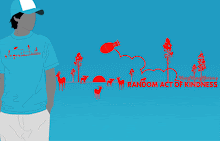
Cartography or Map Design is the practice of creating maps or visual representations of a surface, as you would see it from above it. Traditionally maps have always been created using pen and paper, but since the introduction and wide spread use of geographic information systems (GIS) and computers, cartography practices have evolved more into the digital world. Most maps today are now generated using map software that falls into one of three main types; GIS, CAD, and specialized map graphic design software.
Basic Overview
A map utilizes a variety of colors, symbols, and labels to represent actual features and provide information on their existence, location, and the distance between them. It can also indicate variation in terrain, heights of natural features, and the extent of vegetation cover.
Maps often function as visualization tools for spatial data which is acquired from actual measurements and can be stored into a database, from which it can be later extracted for a variety of purposes. Current trends in this field are moving away from traditional methods of mapmaking and toward the creation of increasingly dynamic, interactive maps that can be manipulated digitally, often known as Web GIS.
Most maps will contain a scale parameter that will allow the user to convert distance on the map to distance on the ground or vice versa. The ability to determine distance on a map, as well as on the earth's surface, is an important factor in GIS and the spatial relationships between features. Other important key elements or features that you should find on a good map would be a title, a data frame, a legend, a scale bar, a north arrow, and citation information such as the date, the creator, projection, overview map location etc.
Examples of Cartography & GIS Map Products
MacKinnon E (2000)
8th International Marathon Canoe World Championship Site Map
- designed for the International Marathon Canoe World Championship that were held in Dartmouth, Nova Scotia
MacKinnon E (2003)
AGRG Annapolis Valley LIDAR Ground Validation Campaign
- presented at the Geomatics Atlantic 2003 Conference held at Acadia University
in Wolfville, Nova Scotia and posted at the Applied Geomatics Research Group seminar room in Middleton,
Nova Scotia
MacKinnon E (2003)
Jeremy's Bay Campground, Kejimkujik National Park
- campground was surveyed in 2003 and mapped for Parks Canada
MacKinnon E (2003)
Jim Charles Loop of Jeremy's Bay Campground, Kejimkujik National Park
- campground was surveyed in 2003 and mapped for Parks Canada
MacKinnon E (2003)
New Brunswick High Precision Network and AGRG 2003/2004 LIDAR Zones
- presented at the Geomatics Atlantic 2003 Conference held at Acadia University
in Wolfville, Nova Scotia and used during the ground validation survey in New Brunswick
More related publications

Tidak ada komentar:
Posting Komentar